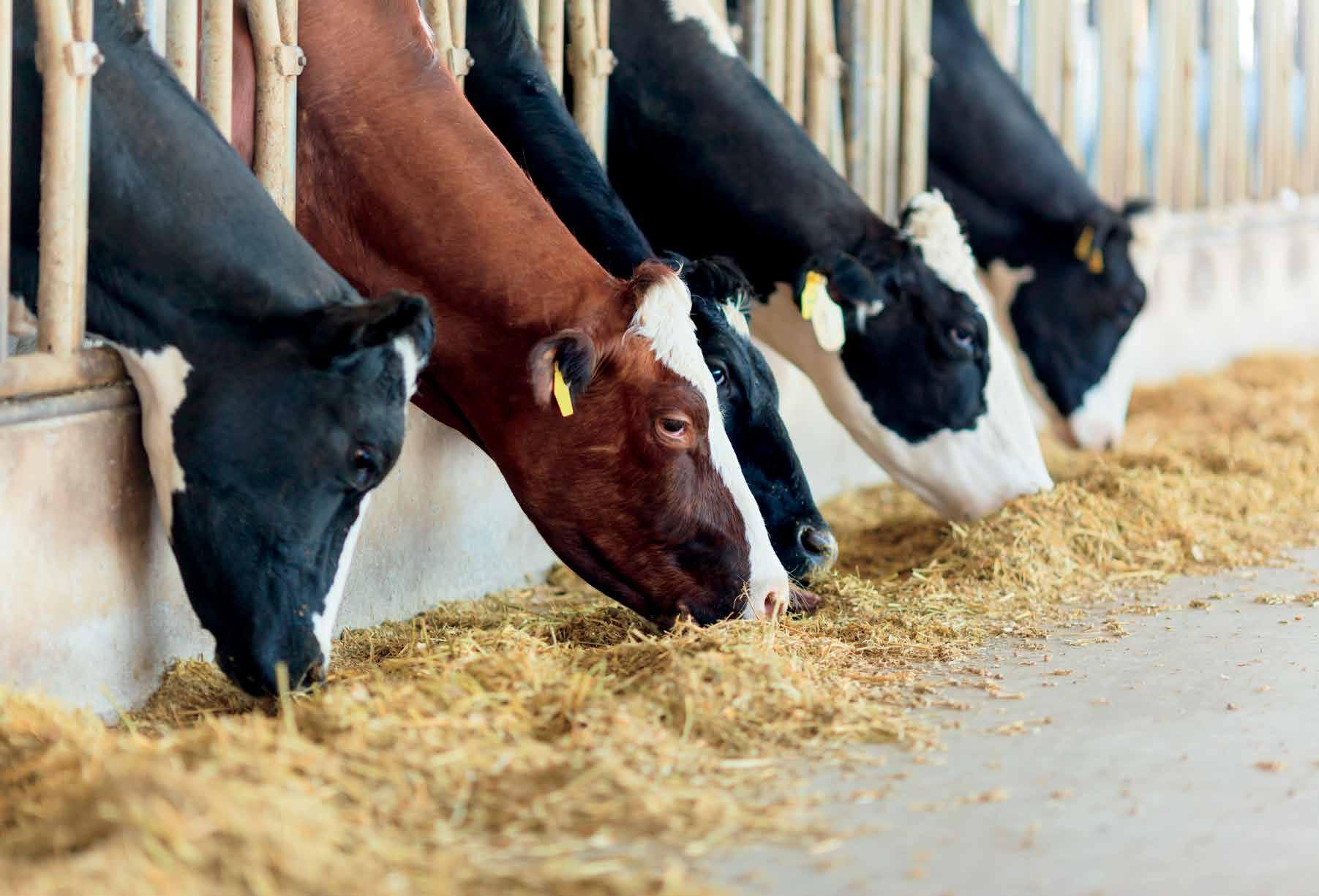Merced County Farm News WeFarm. You Eat



Duarte held a slight lead with 50.1 percent of the vote so far over Democrat Adam Gray. It was 34,715 to 34,515 — a difference of only 200 votes.
By: John Miller & Johnathan Whitaker, Merced County TimesNovember 10, 2022 - The Election Night drama that played out on TV sets across the nation was no different in the Merced area and its local races.
There were surprising results, tooclose-to-call situations, and cautionary mention that more ballots need to be counted.
It’s important to note that by the next morning, Wednesday, many precincts were listed as “partially” reporting since vote-by-mail, provisional, and other ballots will continue to be processed.
In the key battleground of California’s 13th Congressional District — which includes Merced County — Modesto farmer and Republican John
Earlier Tuesday, Gray held the slight lead, including in Merced County, which he has represented as State Assemblyman for the past decade.
“This election doesn’t end until every vote is counted, and the people make their voices heard,” Gray said. “But I am ready to hit the ground running to bring down the cost of living, increase wages, and make the Valley a better place to live and raise a family.”
It’s been a heated election for both the 45-year-old Gray and the 56-yearold Duarte, with attack ads from both sides landing in mailboxes, on air, and online. The race has attracted some $15 million in campaign funding from outside the district to support the candidates.
Meanwhile, Esmeralda Soria and Mark Pazin were in a very tight race for the open Assembly District 27 seat. Soria held 50.3 percent of the vote, or 24,193 votes, compared to Pazin’s 49.7 percent, or 23,906 votes.
The newly-established District 27 seat represents Merced, Madera and Fresno counties in the State Capitol. Soria is currently a Fresno City Councilmember and Pazin is the former Merced County Sheriff.
Pazin was cautiously optimistic on Election Night, holding his campaign party at the Marriot Courtyard Hotel in Merced with many local residents in attendance. Soria joined State Senator Anna Caballero at the Bella Luna restaurant in Merced for a enthusiastic get-together with supporters.
For her part, Senator Caballero ended up ahead of her opponent Amnon Shor by morning with 55.3 percent of the vote.
The fate of this year’s races for the Merced City Council was expected to determine the future decision-making at City Hall on issues such as public safety
and housing development.
It looks like things such as support for an extension of the half-cent Measure C public safety sales tax is safe with two proponents likely to win seats at the dais.
In District 1 (South Merced), Ronnie De Anda held an overwhelming lead of 69.37 percent, or 376 votes, over incumbent City Councilman Fernando Echevarria, who only gathered 161 votes.
The 81-year-old former postal carrier proved to be too much for Echevarria — a first-term city leader who had been censored by colleagues for remarks he made in public during the aftermath of the George Floyd murder. He also opposed putting Measure C on the ballot this year, saying now was not the time. Interestingly, the City of Atwater did put a full 1-cent sales tax public safety measure on this year’s ballot and it looks like it’s going to be approved by voters.
Said De Anda: “I have things in my mind, and then I have things that I really want to do. One that I really want to do is get that council where it’s compatible. … Going around saying ‘Well I’m just gonna take care of my district’ is totally wrong. When you’re elected you’re elected to a council for the entire city.”
Measure C proponent Shane Smith appeared to be on his way to victory in District 4 (Central-North Merced), leading a field of two other candidates, with 48.74 percent of the vote (1,101 votes). Casey Steed was trailing with 751 votes, followed by Javier Fuentes with 395 votes.
“The results are looking great and we hope they hold,” Smith told the Times. “The first thing I would want to do as a councilmember-elect is to have meetings with people around the community and kind of get set on priorities and then really understand where the city is going. … I really think what the No.1 priority for the next council is going to be getting Measure C funding back in front of the voters and really shore up public safety immediately.”
Only a tie would be tighter in the race for the District 6 (North Merced) seat on the Merced City Council.
Political newcomer and community activist, Fue Xiong, was leading incumbent Councilman Delray Shelton by only one vote. It was 856 to 855 on Wednesday morning.
This has been a bitter race between a Sheriff’s Department administrator and a City Council critic who has argued to reimagine law enforcement funding. It’s also a race marked by tens of thousands of dollars in campaign funding. Much of Xiong’s campaign support has poured in from an outside advocacy source based in Los Angeles and the Bay Area. Shelton was supported by the local business and the law enforcement community.
On Election Night, some political insiders speculated that if this race stays close, it could go to a special election, or face litigation due to an earlier mistake made by the county’s Election Department. Some 2,000 ballots were sent out in early October with the wrong names of City Council candidates, and this affected District 6. The county sent out corrected ballots a few days later.
“I have faith that we will come out on top,” Shelton told the Times. “We did the right thing with our campaign. It’s the people’s choice.”
The candidate said he realized his re-election would be an uphill battle when an illegal campaign flyer with his picture and campaign logos started appearing on doorsteps with misleading information. He said the move affected his communication with constituents.
On Election Night, Xiong told his supporters: “We have to make sure we build a better Merced for all of us, not just a very few. … We’re all going to have to rely on each other as we continue — as we continue to fight — because it’s only a matter of time. It’s not if we’ll win, it’s a matter of when we
2022 American Star Farmer: Peter Bliss
USDA releases nationwide farmer, rancher and forest manager survey
Proposed Central Valley dam likely to move forward after judge’s ruling
One of the most glaring and blatantly ironic ideological mutations that has pervaded our society (not just in the USA but for some reason especially so here) is the NIMBY phenomenon. The NIMBY phenomenon essentially describes a type of mentality that an ever-increasing percentage of our population seems to be afflicted with, and it usually goes hand in hand with any number of other pervasive, unproductive ideologies that are of course always well intended by those who buy in but rarely make good economic or environmental sense in the big picture.
NIMBY of course stands for “Not In My Back Yard.”
For the remainder of this article, I’m going to refer to the people who subscribe to this philosophy as “NIMBY’s.” In a nutshell, a NIMBY is someone who is adamant that certain types of processes or operations be specifically prohibited from happening in their own area, city, county, state, country, etc…yet simultaneously (and ironically) they also regularly utilize and enjoy the benefits of the processes, operations, technology and goods created or supplied by the very same operations they oppose. These processes might include: mining of elements, drilling for and pipelining of oil, damming rivers or tributaries, fracking for natural gas, and of course farming, ranching, fishing and timber harvesting among many others too numerous to name here. In other words they don’t have a problem utilizing the convenience and benefits of these processes. They just don’t want it happening here in this country or especially in their own backyard so to speak. This type of person is usually

narrow minded or else simply obtuse in their thinking. I have had conversations with this type of person on many occasions throughout both my professional life as a farmer and farming advocate, as well as in my personal life with acquaintances, friends, and even at times family members who are of a type of political persuasion that rarely aligns itself with a whole lot of common sense thinking and application thereof. These are people who are against drilling and pipelining of domestic oil sources for “environmental reasons.” They are against the establishment of mines, and also support the closing of domestic mining operations because of “environmental concerns.” They are against the use of pesticides and fertilizers in agricultural operations. They are against the harvesting of timber and active human management of forests. Some are against animal agriculture, and they often are vociferously opposed to the grazing of cattle on public lands. These are just a few examples.
Yet they all live in some type of housing that has been built utilizing lumber, steel, copper wire, many different types of plastics and rubbers, and a plethora of manufactured components of varying types. Some have swimming pools. Many have installed solar panels to generate “green


energy.” Most use some type of fuel to heat their homes in winter. They all have TV’s, computers and mobile phones. They all drive some type of vehicle (whether powered by fuel or electric really doesn’t matter much) and often also have bicycles and other “toys” as well such as boats, kayaks, RV’s, etc. All of these technologies require oil, mining, and manufacturing to produce. They all eat food, naturally, and while many try to support organic or regenerative agriculture, most still are consumers of “conventionally” produced ag products in many other forms. Many have moved from a city to the rural country and then loudly complain about the smell of dairies or the noise of tractors plowing at night or the spraying of pesticides near their new home. Yet I haven’t met one yet who was opposed to the work that the Mosquito Abatement District does to keep mosquito populations to a minimum (doesn’t mean they don’t exist). Many utilize various forms of herbicides, pesticides and fertilizers in their own home landscapes while decrying the use of it in agriculture. They point fingers at agriculture and certain crops produced and accuse us of unfair or “heavy” water use, all while not fully understanding the full scope of what the use of that water accomplishes. Many get the bulk of their “knowledge” and information (more often than not more like misinformation) from less than credible sources such as podcasts or blogs by social media posters who in turn got the bulk of their information from others of the same
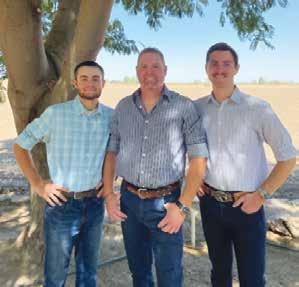
kind. It’s one of the unfortunate realities of the “Information Age” that more misinformation than solid information is spread, and much of the news and articles on just about any topic is halfbaked or else based on sketchy sources with no solid root in unbiased science or facts.
The fact is that all NIMBY’s still want to enjoy the benefits of modern technology, conveniences and a bountiful food supply. They seem to have no problem with the drilling, mining, farming, ranching, timber and other industries being alive and well in other countries. They want…no, DEMAND!...all the benefits without being willing to live in harmony with the providers of those benefits. This mentality has gone as far through how these people vote as to pervade our government and its policies with regard to domestic regulation and limitation, and as a result made us far too heavily dependent on other countries, many of whom gladly take our money but really don’t like us very much. It’s just bad policy, both economically as well as on general principle. We have the methods and technology right here in our own backyards to produce the bulk of what we need and limit reliance on foreign sources, if we could collectively just get out of our own damn way!
The reality is that the NIMBY mentality is not only ridiculous and counterproductive, it is also poignantly hypocritical. I hope these NIMBY folks wake up and smell the coffee before our economy is completely in shambles.
November 4, 2022 -
AnnouncementsCdfa Accepting PreProposals For 2023 Fertilizer Research And Education Program Grant Cycle
CDFA’s Fertilizer Research and Education Program (FREP) is now accepting pre-proposals for the 2023 cycle of the FREP Grant Program. If a pre-proposal is selected to advance in the evaluation process, a full proposal will be requested later. FREP’s annual competitive grant program funds research, demonstration, outreach and education projects that advance environmentally safe and agronomically sound fertilization and irrigation practices, and minimize environmental impacts of fertilizing materials. The 2023 request for proposals includes several initiatives to help effectively manage irrigation water and fertilizing materials in California agriculture. California’s agricultural communities are diverse, and many have historically lacked access to resources and information needed to successfully run their businesses. Thus, CDFA encourages projects that include demonstrable benefits for underserved farmers and farmworkers.
This year’s priorities include: outreach, education and demonstration projects focused on increasing the adoption of efficient nutrient and irrigation management practices and technologies; evaluating challenges and barriers to adoption of management practices; the role of organic input materials in soil nutrient management; demonstrating and/or validating management practices that optimize nutrient and/or irrigation water use; filling knowledge gaps for nutrient and
irrigation management in specific crops; understanding nutrient movement from the root zone; and mitigation strategies to reduce nutrient losses.
Applicants are invited to submit twopage pre-proposals to FREP by Monday, December 19, 2022. Pre- proposals should be aligned with at least one of the identified priority research areas. Further information on the 2023 FREP Grant Program RFP, including timelines, application criteria and priority research areas are available on the program web page at www.cdfa.ca.gov/is/ffldrs/frep/ CompetitiveGrantProgram.html All pre-proposals will be reviewed by the Fertilizer Inspection Advisory Board’s Technical Advisory Subcommittee (TASC). Applicants whose preproposals are selected by TASC will be invited to develop full proposals. For more information, please send email inquiries to FREP@cdfa.ca.gov
The deadline for the Biologically Integrated Farming Systems (BIFS) and Proactive Integrated Pest Management Solutions grant programs has been extended from October 31, 2022 to November 11, 2022. The application period will close at 5pm PST on November 11, 2022. For a full timeline of dates and other important information for applicants, please visit the BIFS or Proactive webpages or contact Office of Pesticide Consultation and Analysis (OPCA) staff at cdfa.eo_oefi_opca@ cdfa.ca.gov. Visit the Office of Pesticide Consultation and Analysis website for additional information.
On November 2, 2022, the Board of Forestry and Fire Protection held a public hearing, where the full Board met to discuss work that will be conducted during 2023. The Board
heard from the Forest Practice, Resource Protection, and Executive Management Committees about their public hearings conducted on November 1, 2022. The highlights of the Board meeting included recommendations from the Joint Institute for Advanced Wood Products Innovation. The members of the Institute previously ranked about 20 projects to suggest that the Wildfire and Forest Health Taskforce prioritize for the next year. California Farm Bureau encouraged the inclusion of the second bullet point. Based on Joint Institute member priority project rankings, the following will be this fiscal year’s focus:
• Biochar market analysis and nearterm priorities/commercial readiness strategy
• Assess state purchasing protocols for mass timber, cellulosic nanocrystals, biochar, and other innovative wood products for state facilities and other operations.
Identify barriers and implications in regard to the state being a purchaser, and develop feasible solutions/ pathways.
• Development of a Life Cycle Accounting Model for biofuel production from forest biomass waste used in CA for potential use in the State’s regulatory and incentive programs.
• Identify process to prioritize brownfield sites. Identify state regulations that are barriers and propose solutions. Produce a CEQA handbook for bioenergy and wood products (similar to OPR solar guidebook).
• Assess how to accelerate procurement of forest-derived RNG to meet CPUC targets.
The other notable presentation to the Board was the Forest Fire Exemption Prevention monitoring report. Staff
only had preliminary data, as the full report will not be available until closer to end of 2022. The staff monitored compliance, effectiveness, and outcomes to see if basic fuels reductions principles are being met. The use of the exemption is growing – about 50 exemptions covering 5000 acres are being submitted annually. The preliminary report shows that projects are meeting the overall goals of fuels reduction, but that not all rules are being specifically followed. The smallest diameter classes for example are met, but stand density goals were missed in over 30% of the projects. Similar results for canopy cover are discussed; but still trees cut and left behind in terms of diameter class are being followed explicitly and that leads to positive overall fuel reduction outcomes. However, only 23% of projects were in the wildland – urban interface, so this exemption type can still be used more extensively, potentially by simplifying applications. To view recorded videos from any of the committees or the full Board meeting, click here.
Grant proposals are now being accepted to improve irrigation and fertilizer management. The California Department of Food and Agriculture’s Fertilizer Research and Education Program (FREP) is now accepting preproposals for the 2023 grant cycle. Preproposals are due Monday, December 19, 2022. For more information on the Request for Pre-Proposals and the FREP grant program please visit:
• FREP Blog: https://blogs.cdfa.ca.gov/ FREP/index.php/cdfa-accepting-preproposals-for-2023-fertilizer- researchand-education-program-grant-cycle/ • FREP Grant Program Webpage: https://www.cdfa.ca.gov/is/ffldrs/frep/ CompetitiveGrantProgram.html
Merced County Farm Bureau is an independent, nongovernmental, grassroots organization that advocates for the men and women who provide food, fiber, and nursery products for our community, state, and nation.
Merced County Farm Bureau exists for the purpose of improving the ability of individuals engaged in production
agriculture to utilize California resources to produce food and fiber in the most profitable, efficient and responsible manner possible, guaranteeing our nation a domestic food supply.
Merced County Farm Bureau supports policies and legislation that promote and protect our Country’s number one industryagriculture for future generations and the security of our nation.
Published monhtly by Merced County Farm Bureau

Phone (209) 723-3001
Fax (209) 722-3814 646 S. Hwy 59, Merced CA 95341
Email: dflake@mercedfarmbureau.org (USPS 339-500)
Entered as Second Class matter, Jan. 20, 1948 at the US Post Office in Merced, CA. Subscription is included in membership. Singles issues are 50 cents. Merced County Farm News is printed by Wesco Graphics, 410 E. Grant Line Road, Suite B, Tracy, CA 95376
POSTMASTER: Send address changes to Merced County Farm Bureau, P.O. Box 1232, Merced, CA 95341; telephone (209) 723-3001; FAX (209) 722-3814. Merced County Farm Bureau does not assume responsibility for statements by advertisers or for products advertised in Merced County Farm News, nor does Farm Bureau assume responsibility for statements or expressions of opinion other than in editorials or in articles showing authorship by an officer, director or employee of the Merced County Farm Bureau or its affiliates.
Staff
Breanne Vandenberg Executive Director
Lorraine Passadori Program Director
Denelle Flake
Farm News Editor/Project Specialist Alexxis Rudich
Project Assistant/ESJ Grower Relations
Pres: Joe Sansoni 761-9284
1st VP: Alan Sano 559-905-1240
2nd VP: David Barroso 652-6437
Sec/Treas: Tim Lohman 988-3545
Past Pres: Eric Harcksen 620-1953 District 1
Sean Davis 769-1804
Joe Maiorino 564-6791 District 2
Bob Vandenberg 704-5568 District 3
Mike Martin ............................ 675-1907
Chad Perry 675-4474 District 4
Jean Okuye 756-2421
Galen Miyamoto 761-5366 District 5
Brent Chipponeri 652-3473
John Van Ruler .......................648-3877 District 6
Dante Migliazzo 769-9525
Bill Arnold. 761-0542 District 7
GIno Pedretti III 756-1612
Tom Roduner 769-9353 District 8
Julie Giampaoli 201-8434
Joe Scoto 761-0489
Directors at Large
Jim Johnston 564-7551
Jeff Marchini 769-9116
Bob Giampaoli ....................... 769-4973
Dan Dewees 658-4343
Louie Bandoni 761-0625
Michael Serrano 485-1935
Mariposa County Farm Bureau Staff
Danette Toso Executive Director
Pres: Kelly Williams 376-2408
1st VP: Elnora George 376-2419
2nd VP: Carla Kelly 742-6862
Directors
Abel Lopez 376-2208
James Palmer 374-3470

Walter Palmer Jr 374-3470
Trevor Lee Smith 769-9969
Danette Toso 376-2304
Tony Toso 376-2304
Jordan Cory .................... 765-401-4078
Farmers and Farm Employees who need to renew their DL-267 Endorsement or acquire their initial endorsement.
The Agricultural Hazardous Materials Transportation Program is being offered by the Farm Bureau and Nationwide Insurance. This class is for persons 21 years or older and have a current California Class C drivers license.

Due to new requirements, once a person completes the course, they must:
• Submit completed training record along with a completed CHP application
• Await paperwork return from CHP

• Pay any applicable DMV fees
• With returned CHP paperwork apply for DL-267 certificate from the DMV




the former Florence Cardoza of Merced in 1942.
After the war, and during his life as a sweet potato farmer, he served as President of the Cali fornia Sweet Potato Council, and US Sweet Potato Council, where he was a Director for over 20 years. He was the first Califor nia farmer to attend the National Sweet Potato Convention, among other industry firsts. Joe ser ved as President of the Merced County Farm Bureau, and was on the Board of Directors of the Nisei Farmers League. He for med the California Sweet Potato Growers Co-op in Livingston, along with several other local growers, which is celebrating its 50th anniversary this year.
His interests and community involvement were very diversefrom serving as a founding member of the Livingston Me dical Group, to past-President of Livingston Rotary, to being
known as the “Voice of Livings ton.” From 1946 to 1996, he an nounced all the Livingston High School football games, lending his strong voice to the communi ty by also announcing everything in Livingston from parades to radio programs. He served on the Livingston Elementary School Board and the Merced County Recreation Commission for many years. Joe’s acting skills even benefited the Livingston Little Theater Group, where he star red in several productions, most notably as Elwood P. Dowd in “Harvey”.
model from UC IPM (http:// ipm.ucanr.edu/calludt.cgi/ DDMODEL?MODEL=CTN), which has a 60 degrees F lower threshold (meaning plants grow minimally below 60 degrees F), there were 2774 GDD between April 1 to Nov 1 in the Merced area in 2023. This is about 200 more than the average during the past 10 years, but only about 6% more. And this is hardly unique: in 1960, 1970, 1990, and 2000, the number of GDD in Merced was greater than 2800. In 2022, sweetpotatoes could have been planted as late as July 20 and still had enough warm temperatures to make a crop. Most replant fields were transplanted in by the end of June, which gave them plenty of time to fully mature.
Other challenges with the weather this year include the severe heat wave that hit September 1 – 9. Harvest crews were being sent home at noon, and daytime highs exceeded 104 degrees F for several days. It’s interesting to note that while Merced did hit a record high of 112 on September 6, temps for other days were always a few degrees lower than the predicted and reported highs during that time. CIMIS weather stations measure temperature over irrigated turf.
His love of baseball began at an early age and became a life-long interest that manifested itself into a devotion to the sport for over eighty years. He organized the first kid’s hardball team in Mer ced County in the early 50’s. He was particularly fond of Ame rican Legion Baseball, serving as a coach, sponsor, announcer
and booster for over fifty years. This led to his being appointed the third Area Commissioner of Baseball. All of these years of being involved in baseball in Livingston culminated in the community baseball field being renamed the “Joe F. Alvernaz Baseball Field,” something he was so proud of.
Joe was predeceased by his parents, Joe and Mabel Alvernaz, brothers, Arthur and John Al vernaz, and sister, Mary Geyer. He was also predeceased by his oldest son, Joey Alvernaz, in 1980 and by his wife of 64 years, Florence, in 2007.
He is survived by five children, Judy Blevins, James (Colette) Alvernaz, and Benjamin (Debbie) Alvernaz of Livingston; Cecelia (James) Simon of San Diego, and Susan (Randall) Wilson of Ma riposa, a sister, Cecelia Luker of Atwater, 17 grandchildren and 13
great grandchildren.
His light on earth has dimmed, but heaven is brighter as he has joined Florence, the true love of 1983-1986 and hired long-time staff member Lorraine Passa dori when she showed up in her clown costume for the interview.
Agriculture lost a strong advo cate that will truly be missed. We will continue to keep his family in our thoughts and prayers.
conditions in the spring, the crop rebounded and performed much better than would be expected. How? Merced had a very hot summer this year—32 days over 100 degrees F –so there could have been more growing degree days (GDD) than normal. Using the cotton
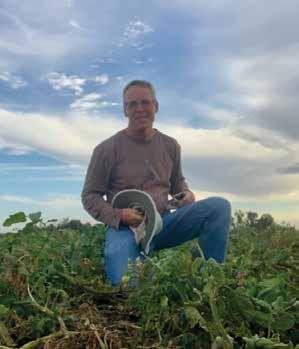
So, the year started cold and windy, and ended dry and heat blasted. Weeds and insects were not much of an issue, but for those fields being pushed through the September heat wave, a very curious disease has showed up. Fusarium surface rot has been a problem for fields harvested in October. All varieties have been impacted, though there is more in Bellevue and Covington varieties because they are grown on more acres. Fusarium is a slow growing soil fungi that usually does not show on infected roots until they have been in storge for months. It prefers warm conditions, and the heat wave in September may have accelerated its growth. Then again, soil temperatures at 6” were essentially unchanged even when air temps were hitting record highs. As such, the cause may never be known.

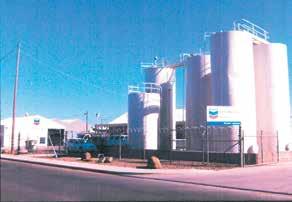
2022 was an extremely challenging year for growers, but there will still be plenty of high quality sweetpotatoes for Thanksgiving.
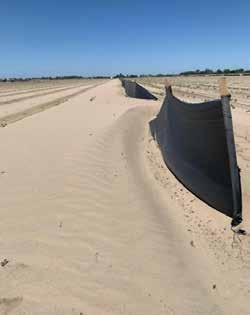
Merced county Far M n ews

S t a t e o f t h e I n d u s t r y | D e c e m b e r 6 | 2 : 0 0 p m D u r i n g t h e a n n u a l S t a t e o f t h e I n d u s t r y a d d r e s s , A l m o n d B o a r d C h a i r A l e x i R o d r i g u e z a n d C E O R i c h a r d W a y c o t t w i l l a d d r e s s w a y s t h e A l m o n d B o a r d o f C a l i f o r n i a i s w o r k i n g t o d r i v e g l o b a l d e m a n d , e n s u r e a f a v o r a b l e t r a d e a n d r e g u l a t o r y e n v i r o n m e n t a n d m a x i m i z e i n d u s t r y e f f i c i e n c y




D r i v i n g G l o b a l D e m a n d | D e c e m b e r 7 | 8 : 0 0 a . m .
B u i l d i n g l o n g t e r m g l o b a l d e m a n d f o r C a l i f o r n i a a l m o n d s i s t h e # 1 s t r a t e g i c p r i o r i t y f o r t h e A l m o n d B o a r d E v e r w o n d e r h o w w e d o i t ? I n t h i s g e n e r a l s e s s i o n f o r a l l a t t e n d e e s , y o u l l h e a r a b o u t h o w t h e A l m o n d
B o a r d l e v e r a g e s t h e a m a z i n g n u t r i t i o n a l p r o f i l e o f a l m o n d s w h a t w e c a l l t h e “ h e a l t h h a l o ” t o d r i v e c o n s u m e r d e m a n d , w h i l e e d u c a t i n g c o n s u m e r s a b o u t o u r r e s p o n s i b l e f a r m i n g p r a c t i c e s t o p r o t e c t t h a t d e m a n d n o w a n d i n t h e f u t u r e
u n c h : I n f l u e n c e r s L I V E ! w i t h K i k s a n d K a t h | D e c e m b e r 7 | 1 1 : 3 0 a . m . T h i s t a l k s h o w f o r m a t s e s s i o n w i l l d i s c u s s t h e p o p u l a r i t y o f s u s t a i n a b i l i t y t o p i c s o n s o c i a l m e d i a , h o w t h e s e i n f l u e n c e r s s e l e c t t h e c o m p a n i e s a n d b r a n d s t h e y p a r t n e r w i t h , a n d w h y t h e y l o v e m e e t i n g a l m o n d g r o w e r s a n d w o r k i n g w i t h t h e A l m o n d B o a r d t o s h a r e y o u r s t o r y
G a l a | D e c e m b e r 7 | 6 : 0 0 p . m .

T h e A l m o n d C o n f e r e n c e A n n u a l G a l a r e t u r n s t h i s y e a r o n a n e w n i g h t m o v i n g t o W e d n e s d a y e v e n i n g , D e c e m b e r 7 b u t w i t h t h e s a m e c o m b i n a t i o n o f i n d u s t r y f e l l o w s h i p a n d l o c a l m u s i c , w i t h j u s t a t r a c e o f m a g i c C e l e b r a t e d L o s A n g e l e s m a g i c i a n A r t h u r T r a c e w i l l c o m b i n e h i s m a s t e r f u l s l e i g h t o f h a n d w i t h i m a g i n a t i v e s t o r y t e l l i n g g u a r a n t e e d t o t i c k l e y o u r m i n d , s e n s e s , a n d f u n n y b o n e !

S p e c i a l G r o w e r B r e a k f a s t : M a n a g i n g I n p u t C o s t s t o I n c r e a s e R O I | D e c e m b e r 8 | 8 : 0 0 a . m . T h i s s p e c i a l b r e a k f a s t s e s s i o n w i l l r e v i e w i n d u s t r y e x p e r i e n c e s o n h o w t o m a n a g e l a b o r , p e s t i c i d e s , a n d o t h e r i n p u t c o s t s i n y o u r o p e r a t i o n B e s u r e t o s e t y o u r a l a r m t o m a k e i t u p i n t i m e t o e n j o y a h e a r t y b r e a k f a s t s a n d w i c h w h i l e g e t t i n g t i p s t o i m p r o v e p r o f i t a b i l i t y
R e g i s t e r a n d l e a r n m o r e a t A l m o n d s . c o m / C o n f e r e n c e

T h e A l m o n d C o n f e r e n c e D e c e m b e r 6 - 8 a t t h e S A F E C r e d i t U n i o n C o n v e n t i o n C e n t e r i n d o w n t o w n S a c r a m e n t o .

October 28, 2022 - Peter Bliss is a member of Merced-Golden Valley FFA in central California, and his supervised agricultural experience (SAE) project sees him farming cotton, almonds and wheat. He started with only 30 acres inherited from his grandfather, but his operation has since grown to exactly 417 acres. In the future, Bliss plans to expand his operation by planting new kinds of crops in addition to his usual big three. In fact, he said he’s already planted corn silage just recently.
Each year at the National FFA Convention & Expo, four FFA members are honored with American Star Awards for outstanding accomplishments in FFA and agricultural education. The American Star Awards, including American Star Farmer, American Star in Agribusiness, American Star in Agricultural Placement and American Star in Agriscience, are presented to FFA members who demonstrate outstanding agricultural skills and competencies through
completion of an SAE. A required activity in FFA, an SAE allows students to learn by doing, by either owning or operating an agricultural business, working or serving an internship at an agriculture-based business, or conducting an agriculture based scientific experiment and reporting results.
Other requirements to achieve the award include demonstrating top management skills; completing key agricultural education, scholastic and leadership requirements; and earning an American FFA Degree, the organization’s highest level of student accomplishment.
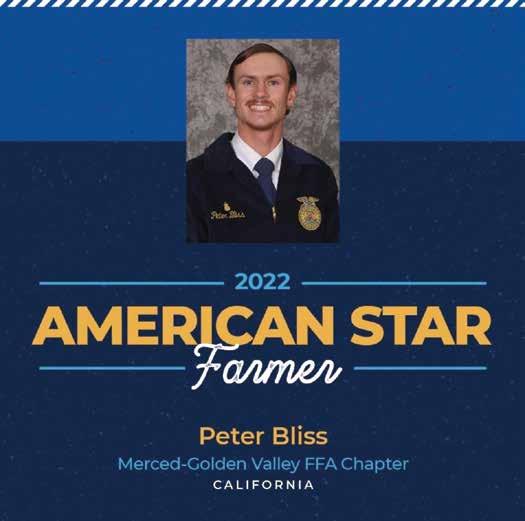
Sixteen American Star Award finalists from throughout the U.S. were nominated by a panel of judges who then interviewed the finalists this fall. Four were named winners during the 95th National FFA Convention and Expo this year, which was held in Indianapolis. Winners received cash awards. Case IH, Elanco Animal Health, PepsiCo and Syngenta sponsor the awards.
Peter shares more with Broadcast Intern Adam Loker.
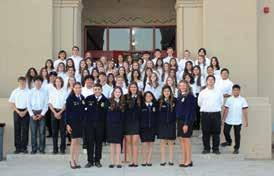 By: Jacky Velazquez, Atwater FFA
By: Jacky Velazquez, Atwater FFA
October 17, 2022 - Sixty Atwater High School 9th grade FFA members along with the six member Atwater FFA chapter officer team recently competed in the annual Merced-Mariposa Sectional FFA Sectional Opening and Closing Ceremonies Contest at Gustine High School. Over four hundred FFA members from Buhach Colony, Delhi, Dos Palos, El Capitan, Golden Valley, Gustine, Hilmar, Le Grand, Livingston, Los Banos, Mariposa, Merced, Pacheco, and Stone Ridge Christian High Schools competed in this public speaking event.
The Atwater FFA had ten novice officer teams and one advanced officer team. An officer team is composed of a president, vice-president, secretary, treasurer, reporter, and sentinel. Official FFA ceremonies build pride, identity, and tradition among FFA members and chapters. All meetings are opened and closed using ceremonies written for those purposes. The Opening and Closing Ceremonies Contest has students recite the responsibilities and duties of their respective offices. Each team was scored and evaluated by a
team of judges in areas that included memorization, delivery, posture, poise, uniform, and team behavior. The contest was also an opportunity for students to meet other FFA members from the other schools in the Merced- Mariposa Section.
The results and student participants from Atwater High School were: Advanced Officer Team (Silver) – President, Kayleigh Trindade; Vice President, Alexa Bracamontes; Secretary, Dulce Campos; Treasurer, Guadalupe Millan; Reporter, Jacqueline Velazquez; and Sentinel, Alany Guzman; Atwater Team “1” (Gold ) Julian Gonzalez, Gabriela Garcia, Jessica Medina, Jarren Arceo, Keaton Lee, Yamileth Rea; Atwater Team “2” (Silver) Margo Rios, Giselle Lucatero, Brandon Vargas, Travis Medina, Juan Castro, Raymond DaCosta; Atwater Team “3” (Gold) Saige Harcksen, Alyssa Durham, Jesselly Garcia, Natalie Gonzalez Leon, Maylin Sandoval, Grace Agundis; Atwater Team “4” (Gold) Lauren Melander, Isabella Silva, Katie Medeiros, Yossi Morales, Haven Kamykowski, Kaiyln McDonough; Atwater Team “5” (Bronze) Hallie Billings, Jammie Jean Lawrence,
Julian Zaragoza, Diana Aguilar Villa, Briana Mendoza Diaz, Jacob Sousa; Atwater Team “6” (Bronze) Karla Olivera Isabella Silva, Paisley Garcia, Hailey Azevedo, Sophia Toscano, Dylan Cardey; Atwater Team “7” (Gold) Ireidy Rocha, Mckel Nairn, Violet Valero, Juan Vargas, Madison Hiler, Ryan Marshall; Atwater Team “8” (Bronze) Oscar Sanbria, Mary Simms, Jose Antunez-Morales, Dulce Martinez,Ylyses Hernandez, Josephine Regalado; Atwater Team “9”(Bronze) Jailene Sanchez, Kylie Medina, Julian Zaragoza, Jocelyn Soto, Parklyn Reed, Maverick Shepherd; Atwater Team “10” (Silver) Gizelle Munoz Zamora, Vincent Vallado, Zachary Shannon, Emma Rosriguez, Jennifer Oblea Maciel, Luis Alberto Lopez.
Students who were recognized with “Outstanding Officer” awards included Travis Medina, Grace Agundis, Lauren Melander, Haven Kamykowski, Paisley Garcia, and Ryan Marshall.

“I’ve never had to compete in a public speaking competition like the Opening and Closing Ceremonies” said Atwater FFA member Ryan Marshall. “I was still really nervous,
but it ended up being a lot of fun and an experience that I will never forget.”
“The students were nervous and anxious prior to the contest, however they really showed their courage and enthusiasm at the event,” said FFA Advisor Kim Mesa. “It was a tremendous opportunity and experience for the students as public speaking and communication is recognized as an important and valuable skill in one’s education and future career.”
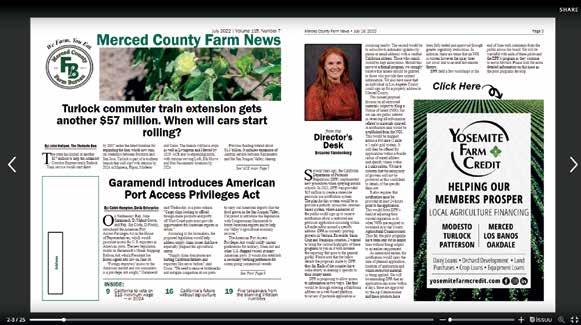
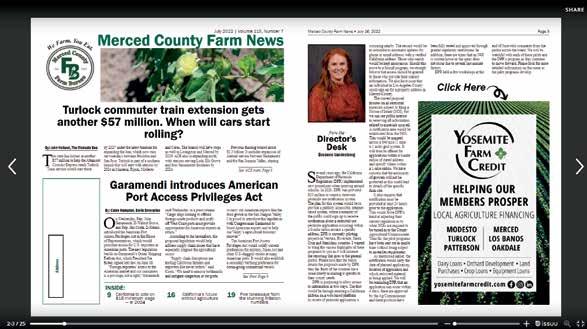
For more information on the Atwater High School Agriculture Department and Atwater FFA, please log on the website www.AtwaterFFA.org .










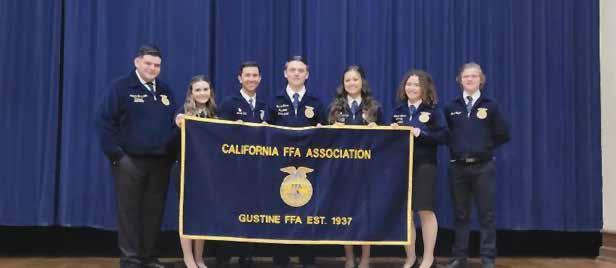 By: Kaitlin Dores Gustine, FFA Reporter
By: Kaitlin Dores Gustine, FFA Reporter
October is one of the busiest months of the year for Gustine FFA members. Our members kick off the month with the Merced Mariposa Opening and Closing Ceremonies at Gustine High School and end the month with a Spooktacular October FFA meeting.
On October 12th, over 500 FFA members gathered at Gustine High School for the Merced Mariposa Sectional Opening and Closing Ceremonies contest. Ninety-six members were a part of the officer teams throughout the section. Our freshmen were geared up and ready for their first-ever competition as a member of Gustine FFA; our freshmen and the officer team had been practicing for a month leading up to the contest. Although they were a bit nervous, they were so excited to show off their skills and the hard work they had been putting into their parts. Gustine FFA is very proud to announce that we had 15 outstanding freshmen officer positions, 2 outstanding officers, 10 gold freshmen officer teams, 2 silver freshmen officer teams, and an outstanding chapter officer team for the fifth year in a row. Our outstanding freshmen officers were Emilia Galindo, who had two outstanding, Michelle Nunes, Gwendolyn Barcelos, Madeline Villnow, Isabella Cortez, who also had two outstanding, Judith Beltran, Alina Camacho, Nat Machucha, Nick Ventura, Oscar Vergara, Joao Palomino, Rafael Gomez, and Ashley Mendonza. Emilia Galindo shared “ I got the experience of being an FFA chapter president, and it was my first-time public speaking while competing, and I really enjoyed it.”
Garret Gomes was named outstanding president, and Christina Moitozo was named outstanding secretary for the chapter officer teams. Baylor Bloom “I had the privilege of being the President for freshman team 2, and my team won gold. I enjoyed this opportunity and meeting other freshmen from our section.”
On October 14th FFA had a tailgate, many members joined together before our battle of the aggies game to enjoy hot dogs and play games. This event helped build the excitement for the Le Grand vs. Gustine football game. Our students always look forward to
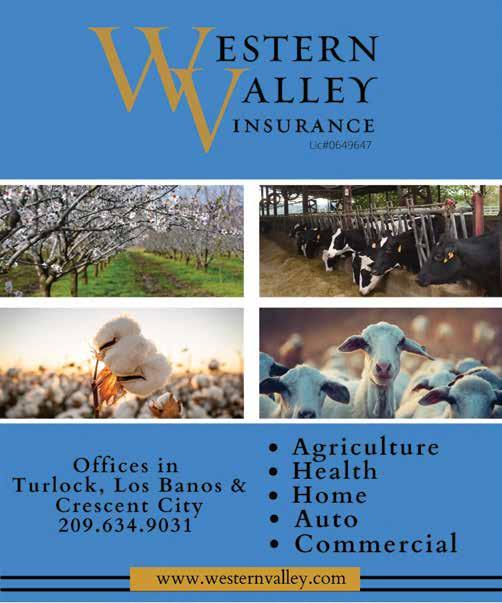
this activity and the opportunity to get dressed up to the theme and this years’ theme was Western vs. Red, White and Blue. Current and future FFA members always look forward to the annual Gustine FFA tailgate and we can’t wait for it next year.
The morning of October 17th our freshmen loaded in the vans and headed to the Merced County Fair Grounds for GLC. Each year the freshmen in the FFA organization get the opportunity to attend the Greenhand Leadership Conference. This is an exciting conference where our first year members get the opportunity to get out of their comfort zone, meet new people and gain many leadership skills they can carry with them the rest of their life. Each year GLC has a different theme and this years’ theme was Top Gun and the greenhands became expert pilots on the 3-circle model of ag education. In each session, members were able to become captain pilots and lead the teams. Many of our members really enjoyed getting to meet a lot of new people. Nick Ventura shared “It is fun. I recommend that freshmen come to it next year and don't see it as an opportunity to miss school but instead to see it as an opportunity to meet new people and make new friends with kids from our surrounding chapters.” Member Alina Camacho was very excited to take advantage of a fantastic experience because you can only do it once. After the conference, Josie Nunes got selected as an outstanding pilot by GLC facilitator Liliana Boesh, Lili described Josie as “The person who went above and beyond, was always positive, contributed to discussions, was my hype woman, and brought the heat to every session.”
On October 17th seventy of our members went on a trip to the Dell’Osso Family Farms Pumpkin Patch. Students had the opportunity to go through a haunted house, pumpkin patch, corn maze, go-kart racing, apple blasters, and fantastic food. This has been the largest group Gustine FFA has ever taken! This event was made possible with the contribution of our ag boosters for transportation. For many students, it was their first time at Dell’Osso farms. Our members truly enjoyed getting the opportunity to go on this trip, and many look forward to the trip next year.
On October 19th Gustine FFA had
our October meeting; this meeting is one of our favorites for many reasons. It was a spooky meeting followed by a costume contest and the annual haunted house. This FFA meeting was also special because in attendance, we had sectional officer Gianna Gonzalez serving as the 2022-2023 Merced Mariposa Sectional Sentinel. We announced our October members of the month from each grade level, Nick Ventura (freshman), Malissa
Nunes (sophomore), Betzaida Ramirez (junior), and Darian Nunes (senior). The Gustine FFA officer team always invites the local Westside 4-H club to our October meeting. The 4-H members got the opportunity to watch an FFA meeting and helped the officer team scare their members throughout the haunted house. We had a tremendous spooky meeting and look forward to next month!
October 30, 2022 - Standards Board Members Demand Exclusion Pay:
The Cal/OSHA Standards Board met in San Diego on October 21. At that meeting, four of seven Standards Board members demanded that Cal/ OSHA include exclusion pay in the two-year non-emergency COVID-19 Standard the Board is expected to consider at their December meeting. Farm Bureau has been supportive of the agency’s decision to forego further exclusion pay requirements in the nonemergency version of the standard it will propose to the Standards Board, given the Legislature’s proven ability to respond to needs for employees to be made whole for missing work because of COVID by passing and renewing COVID-19 Supplemental Paid Sick Leave (SPSL), most recently doing so in August for SPSL that will remain in effect until December 31, 2022. These Board members persist in demanding the reinstatement of exclusion pay, found in the Emergency Temporary Standards the Board has passed in 2021 and 2022, in spite of explanations by Cal/OSHA staff that employees have access to wage replacement by Workers' Compensation, COVID SPSL, 24 hours of paid sick leave mandated by AB 1533, and job-protected leave mandated by the California Family Rights Act (CFRA) and the federal Family and Medical Leave Act (FMLA).
Upcoming FELS Webinars & Trainings
(In-person training): Mandatory Produce Safety Training:
The Food Safety Training Partnership, a cooperative effort of California Farm Bureau, Farm Employers Labor Service, and the Safe Food Alliance, is offering produce safety training required by the federal Food Safety Modernization Act (FSMA). Trainings will be offered in-person in Modesto. The $35 training fee is substantially supported by a grant from the California Department of Food and Agriculture.
• December 3 & 4, California Farm Bureau Young Farmer & Rancher Conference and California Farm Bureau Annual Meeting, Monterey
• January 18, 2023, San Diego
County Farm Bureau, Escondido
• January 26, 2023, Stanislaus
County Farm Bureau, Modesto
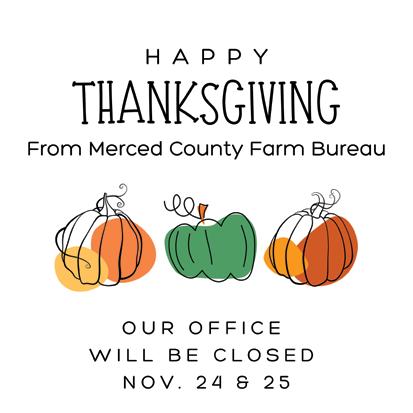
• February 1, 2023, Tehama County
Farm Bureau, Red Bluff
You can find registration and more information at the Food Safety Training Partnership website.
FELS Webinars: ICYMI (In Case You Missed It)
The California Consumer Privacy Act is Coming Soon; Are You Ready? Before the California Legislature adjourned for 2022, it failed to extend an exemption to the California Consumer Privacy Act (CCPA) for businessto-business and employee-related information. CCPA imposes detailed (and possibly expensive) security and privacy protections for this data; what will you be required to do to comply?
Julie Kadish of the Chicago office of national law firm Sheppard Mullin explained how (or if) CCPA applies to your business and what you need to do and need to know before January 1, 2023. Julie is an associate in the Intellectual Property Practice Group in the firm's Chicago office. She is a Lead Associate of Sheppard Mullin's Privacy and Cybersecurity Team.
Arbitration Agreements for California Ag Employers: Do I Need One? How do I Get One? California policymakers keep trying to narrow employers’ use of arbitration agreements that require employees to arbitrate disputes over employment-related matters. Federal courts, including in the recent Viking River Cruises case, push back by asserting federal preemption. Employers and their counsel push arbitration rather than resort to California’s crowded and expensive litigation system where the deck is already stacked against employers by the Private Attorneys General Act (PAGA), liberal and sometimes hostile judges, and unsympathetic juries. How will an arbitration policy help you as an employer in California? How big a victory was Viking River Cruises, and how will the union- and employeefriendly California Legislature respond?
Catherine Houlihan of FELS Group Legal Services plan partner firm Barsamian & Moody explained it for our audience.
Employer Rights During a DOL Investigation: Do you know what to do if you find yourself the unlucky employer chosen for a Department of Labor (DOL) workplace inspection?
Catherine Houlihan, Associate Attorney with FELS Group Legal Services Plan partner firm Barsamian & Moody helped our viewers come up with a DOL
inspection action plan.
You can find webinar videos, presentations and other information about webinars you missed at Webinars
by Farm Employers Labor Service.
Questions? Comments? Please call us at 800-753-9073 or email us at info@ fels.net.
continued from page 1
make up the majority of this city. We’re gonna let them know that.”
Mike Nelson, the former Merced County Supervisor, defeated City Councilman John Cale in the race for mayor of Atwater.
The morning after Election Night, Nelson was up with 66.7 percent of the vote, or 2,292 votes, compared to Cale’s 32.6 percent, or 1,120.
“Knocking on more than 4,000 doors gave me the opportunity to talk and listen to people all across our city,” Nelson said. “Seniors concerned about costs, parents who worried about neighborhood parks, young couples
with small children concerned about finances and safe neighborhoods. People struggling to make ends meet. And sometimes doubting they will be able to do so. … I will be a mayor who acts on behalf of all Atwater residents in everything I do.”
Nelson added: “I also want to recognize the work John Cale has made to our city during his time on the council. John will remain on the council for at least the next two years, and I look forward to having a productive working relationship with him and the other members of the Atwater council.”
Cale was obviously disappointed with the election result, but he told the Times on Tuesday night that he was happy Measure B — the city’s 1-cent public safety tax — was on its way to victory, with 2,593 YES votes (74 percent) compared to 96 NO votes (25.89 percent). A 2/3 vote was required
for the measure to pass.
“It’s going to be good for the city,” he said. “The Measure B committee did a fantastic job.”
In another race with a razor-thin margin, Atwater City Council candidate James Murphy was leading incumbent City Councilman Danny Ambriz by only 6 votes, 269 to 263.
Stay tuned for more on this one.
As of Wednesday morning, the county’s Elections Department has reported a general voter turnout at 23.21 percent or 28,931 voters casting ballots in the county. The number of register voters in the county for the election was at 124,665.
Elections officials will continue to count each ballot with a final
certification date for the election of December 9th.
Tim Razzari was in the lead for the Area 2 seat on the Merced County Board of Education.
Tiffany Pickle was in the lead for the Area 2 seat on the Merced Union High School District.
Barbara Dutra held a very slight lead over Mary Ellen Arana for the Area 1 seat on the Atwater Elementary School District (AESD) Board.
Jessica Reed was in the lead for the Area 5 seat on the AESD Board.

Patrick Nagy was well in the lead for Mayor of Gustine
Jose Moran was well in the lead for Mayor of Livingston
Gurpal Samra and Jason Roth were both in the lead to become members of the Livingston City Council.
WASHINGTON — Producers can now take a nationwide survey to help the U.S. Department of Agriculture (USDA) improve and increase access to its programs and services for America’s farmers, ranchers, and forest managers. The survey includes new and existing customers. USDA encourages all agricultural producers to take the survey, especially those who have not worked with USDA previously. The survey gathers feedback on programs and services available through USDA’s Farm Service Agency (FSA), Natural Resources Conservation Service (NRCS) and Risk Management Agency (RMA).
The survey is available online at farmers.gov/survey, and producers should complete by March 31, 2023. Stakeholder organizations are also encouraged to share the survey link through their networks. The survey is available in 14 different languages including Arabic, Chinese, English, French, Hmong, Korean, Navajo, Punjabi, Somali, Spanish, Tagalog, Thai, Urdu and Vietnamese.
“A robust survey response that
includes the perspectives of all of our customers, including underserved producers, will help USDA better understand the unique needs of both existing and prospective customers, while identifying opportunities to enhance government programs and services. Please take the survey, especially if we haven’t worked with you before,” said Robert Bonnie, USDA’s Under Secretary for Farm Production and Conservation (FPAC). “This survey will provide USDA with critical data to help USDA serve all of agriculture.”
In addition to the online survey, the FPAC Business Center, which is administering the survey, will also mail 11,000 printed surveys to various local state stakeholder organizations and farmers markets.
The survey is an Office of Management and Budget requirement supported by the Biden-Harris President’s Management Agenda (PMA), which identified FSA and NRCS as High-Impact Service Providers. These agencies provide critical customer-facing services and are expected to use the survey data to make targeted improvements.
November 10, 2022 - After a midterm election that appeared to reinforce America’s cultural divide between urban and rural areas, reaching compromises to craft the 2023 Farm Bill could be more of a challenge, two political pros say.
While Republicans and Democrats from farm states have been able to work together in the past, the fact that there are fewer Democrats representing ag areas will be the “biggest obstacle,” said former Rep. Collin Peterson, D-Minn., who chaired or was the ranking member of the House Agriculture Committee from 2005-21.
“My farmers up here have gone so hard to the Republican side in the last few elections that I don’t know what it’s going to take for the Democrats to get it back,” Peterson said.
“It’s a big problem, and if I had an answer I’d be out there promoting it,” he said. “You’ve got guns, abortion, critical race theory, transgender bathrooms –that’s what we hear about out here in rural districts and it works.”
He noted that in his old district, Republican Rep. Michelle Fischbach –who defeated him in 2020 -- won Nov. 8 with 67% of the vote.
“They (Democrats) had a tough time getting anybody to even run in the district,” he said.
A GOP House?
With Republicans expected to hold a thin House majority when all the counting is finished, the closeness of the margin should prompt the two parties to work together on key legislation, including the Farm Bill, Peterson said.
“People are going to try to push (lawmakers) to one side or the other, but let’s work on what we can actually get done and come to a bipartisan agreement on,” Peterson said. “They should be able to back off the crazies in both parties by doing that.”
Food and agriculture consultant Randy Russell, a one-time Reagan administration official, agrees about the need to work toward compromise. He noted that while there is widespread dissatisfaction with the direction of the country, Democratic candidates enjoyed a 2% edge among independents.
“We are facing a truly divided government,” said Russell, president of Arlington, Va.-based The Russell Group.
“If we’re going to get a Farm Bill done, it has to be in a bipartisan fashion … I share Collin’s optimism. Yes, it’s going to be difficult, but it also provides a great opportunity to come up with a compromise.”
Peterson and Russell made their remarks Nov. 9 during a post-election online news conference hosted by North American Agricultural Journalists, a professional organization.
Their comments came as ballots were still being counted across the country to determine majorities in the U.S. House and Senate. Republicans held about a 20-seat edge in the House as of late Nov. 9, while Senate control was hinging on outcomes in Arizona, Nevada and Georgia.
Initial discussions on what is due to be the 2023 Farm Bill have already begun at field hearings and producer meetings across the country, although there has yet to be significant legislative proposals or debate.
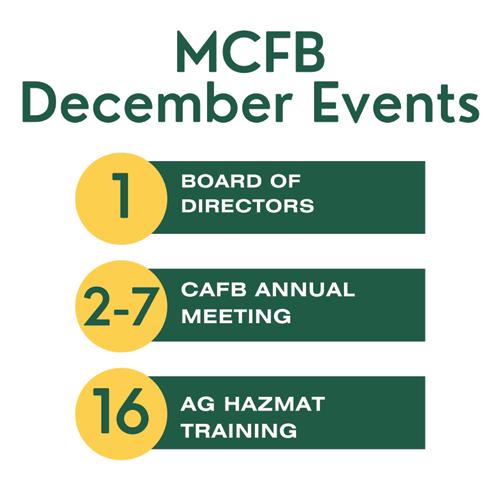
If the House changes hands, the Agriculture Committee chair will likely be current ranking member Rep. Glenn “GT” Thompson, R-Pa., who said at the Farm Progress Show in August he’s ready to get legislative work back to normal order with accomplishing an ontime farm bill in 2023.
He also believes the Farm Bill is the one piece of legislation most likely to move in 2023, which also with it brings the opportunity to provide greater oversight of USDA.
Among one of the bill’s more contentious elements could be programs initiated under the so-called Inflation Reduction Act, which passed in August. The bill included about $40 billion for the USDA for climate-smart agriculture programs, biofuels development, forest restoration work, renewable energy tax credits, conservation technical assistance and rural electric cooperative carbon capture and storage.
Thompson voiced displeasure at the bill this summer, accusing Democrats of “trying to corrupt the Farm Bill process.” He said the bill could end up being a “slush fund” for Secretary of Agriculture Tom Vilsack and USDA to throw money at programs without consulting with ag committee members. The Senate Agriculture Committee’s current ranking Republican, Sen. John Boozman of Arkansas, also criticized the legislation.
Debate over the bill could also include discussion of a trio of current ag-related bills that have languished in the current Congress, noted Peterson and Russell:
• The Farm Workforce Modernization Act by Rep. Dan Newhouse, R-Wash., a guest worker program for the agriculture industry that passed the House for the second time in March 2021 but has stalled in the Senate.
• The Cattle Price Discovery and Transparency Act, which would set minimum levels of cash-market purchases for packing companies and limit their ability to use alternative marketing formulas to set prices in advance.
• The Growing Climate Solutions Act, which would authorize the USDA to set up a third-party verifier program for carbon markets. Promoting growth
“If we’re going to support the growth of private carbon markets, getting the act passed and enacted would be a positive step toward getting third-party certifiers out into the marketplace,” Russell said. “I’m hopeful it will get done.”
Neither Russell nor Peterson expect these bills to gain traction during
the lame-duck session, as much of lawmakers’ attention will be focused on passing appropriations bills for the coming year, they said.
Peterson noted that debates over Farm Bill reauthorizations are always contentious; he passed three of them during his tenure, including the 2008 bill that prevailed despite a presidential veto. Peterson said Thompson should get together with Rep. David Scott, D-Ga., the current ag committee chair, and leaders from the Senate Agriculture Committee to find areas of common ground.
“My advice (to Thompson) is to figure out what the Democrats need on nutrition – not what they want but what they need – and try to make that agreement before they start the whole process,” Peterson said.
Nutrition programs are often a stumbling block for lawmakers, he said, but a large increase in nutrition funding during the COVID-19 pandemic is now in the statute “so they don’t have to add any more.
“There will be challenges, but we’ve had those before,” Peterson said. “Hopefully people will learn from some of the lessons of the past. I’m optimistic that we can help get this thing done. We need a new Farm Bill.”
November 9, 2022 - The drought took a new turn in 2022 as it swept through California. It hit some regions harder than ever, leaving others more intact, and collided with new groundwater restrictions that sent many farmers scrambling.
UC Merced researchers estimate the last two years of water scarcity have cost California agriculture about $3 billion in lost sales. The fallowing of more than 700,000 acres of land this year has led to $1.7 billion in losses, while the industry faced a $1.3 billion decline in revenues in 2021.
The indirect impacts to the processing sector doubled that of production agriculture, at nearly $6 billion and more than 12,000 jobs lost. Food processing is typically a $33 billion industry in the Central Valley, supplying 90,000 jobs.
The research paper is currently under peer review and in the final stages of publication, meaning some statics may fluctuate some until then.
Professor Josué Medellín-Azuara told the State Board of Food and Agriculture last week that every drought is different. This year showed how devastating the consequences can be to regions that are traditionally wet, such as the Sacramento Valley, and how rising temperatures are playing a greater role.
Under intense and lingering heat waves, evaporative demand consumed up to five inches of water. Extrapolate that across the Central Valley and that amount adds up to enough to fill a reservoir and supply agriculture and cities, explained Medellín-Azuara. He is working on a separate paper with postdoctoral researchers to evaluate how much the increasing evaporative demand is impacting food production. Another study is examining water rates.
The net water shortage was roughly 1.8 million acre-feet in 2021—nearly half of that within the Central Valley— and 2.6 million acre-feet in 2022. Yet some reservoirs were able to recover some water storage this year.
The researchers estimate the race to dip into groundwater reserves raised pumping costs $184 million this year. Medellín-Azuara suggested that is likely due to the high capital costs for
installing new wells or overhauling existing ones in the Sacramento Valley to account for the unprecedented drop in water deliveries. Meanwhile, the paths of atmospheric rivers in October and December last year boosted storage levels further south, allowing more reservoir releases into the Tulare Lake Basin.
Alvar Escriva-Bou, an engineering and policy researcher at the Public Policy Institute of California (PPIC), surmised that many farmers in the Sacramento Valley would have liked to pump more but lacked the wells for it, while the Tulare Basin already has the capacity to pump more water since the surface water availability is more variable.
Board member Bryce Lundberg, who is vice president at Lundberg Family Farms, noted that “there just aren’t pumps” on the west side of the Sacramento Valley. He found that costs for electric wells have remained similar to those in 2021, while diesel wells have doubled in cost.
Yet the reduced pumping in the San Joaquin Valley also validates what Escriva-Bou has heard from basin managers: that pumping restrictions are already underway as local agencies begin to implement 20-year plans for the Sustainable Groundwater Management Act (SGMA). He added that subsidence related to over pumping has been creating new hurdles for SGMA plans as well.
“We are starting to see the initial impacts of SGMA implementation, in terms of demand reduction and other aspects,” said Paul Gosselin, who directs groundwater management at the Department of Water Resources (DWR), in a separate presentation. “Some of this—for good or for ill— caught some growers by surprise, thinking this was going to be a longerterm implementation. But it's starting to happen.”
Gosselin shared that DWR has been compiling a list of groundwater sustainability agencies that have started to implement allocation reductions or have plans to do so soon. Many agencies have been setting a sustainable yield value for the basin, he explained. Growers are allowed to pump more than that amount by paying a replenishment
fee for an interim period.
Citing PPIC’s estimate of up to a million acre of farmland dropping out of production for SGMA, Gosselin warned: “This may be just the initial start of it, and it's not going to be easy.”
Driving that sentiment further, Josh Viers, a civil and environmental engineering professor at UC Merced, reminded the board that California is not alone in facing an unprecedented drought. The Elephant Butte Irrigation District in New Mexico’s Mesilla Valley, the nation’s top pecan-producing region, delivered just six inches of water to growers this year. Poorly timed monsoonal rains came after the growing the season.
“They're starting to tap into their aquifer at rates they've never seen before,” said Viers.
The decades-long megadrought spanning the Colorado River basin— along with the anticipated allocation cutbacks for the coming year—will
likely stress the supply of feed crops for the livestock sector, according to Medellín-Azuara, who cited recent findings from UC Davis Agricultural Economist Daniel Sumner.
Inflation-driven prices in milk products have incentivized dairies to produce their own feed crops to maintain herd sizes, though he cautioned that the final inventory numbers will not be available until January. The production of feed crops did not decline in 2022 but the prices were much more expensive. Livestock have also survived on citrus roughage and almond byproducts when irrigated crops are not available.
“We might see some concentration [in dairy ownership],” said MedellínAzuara. “But that is a little too early to say.”
While strong commodity prices can give the impression that agriculture is doing well, he concluded, that is not the case everywhere.

California’s state retirement plan mandate is currently in effect for employers with 5 employees or more and will expand on January 1 to include those employers with 1 or more employees. Ensure you are prepared to comply with the new California retirement plan mandate. Join us at one of our FREE upcoming informational webinars presented by Nationwide to understand what is required under the new mandate and find out which registration deadline applies to you based on your employee count. To register and receive the Zoom link, enter your contact information below and select your desired webinar date. You will receive the Zoom link and details two days before your selected webinar date.
Date: December 15, 10-11 am
For more information or to register, visit cfbf.com
November 5, 2022 - Both sides of a controversial proposed Central Valley dam hailed a Nov. 3 court ruling kicking back the project’s environmental documents as a success.
A Stanislaus County Superior Court Judge ruled there was insufficient information about a road relocation that is part of the proposed Del Puerto Canyon Reservoir project, which would sit just above the town of Patterson in the Diablo Range on the west side of the San Joaquin Valley.
More definitive information on the proposed realignment of Del Puerto Canyon Road will have to be provided in the Environmental Impact Report by project proponents, the Del Puerto Water District and the San Joaquin River Exchange Contractor Authority.
But that’s the only redo required.
The judge denied a host of other complaints about the project brought by environmental groups as well as all of the challenges levied by another group of irrigators, the Friant Water Supply Protection Association.
Still, environmental groups counted the ruling as a win.
“The project cannot go forward as it stands,” said Peter Broderick, senior attorney with the Center for Biological Diversity, one of the environmental
groups. “At the end of the day, the result of this ruling will be the need to go back to the drawing board.”
Yes, agreed Anthea Hansen, general manager of Del Puerto, but the ruling doesn’t stop the project.
“I don’t think that it really impacts our schedule,” Hansen said. “The one thing it does do is put the work that we needed to do on the road relocation, it puts that front and center now.”
At a Nov. 4 Exchange Contractor Authority board meeting, the group’s attorney said there had been some uncertainty about where to place the Del Puerto Canyon Road when the project was finalized. The county had disapproved of the proposed placement, he added.
The proposed dam would cover 800 acres and hold 82,000 acre feet of water. Some of the water would be captured from Del Puerto creek but other supplies, up to 40,000 acre feet, would be diverted from the Delta-Mendota Canal from the Exchange Contractors’ federal allocation, according to court documents.
It was that canal diversion that caused concern among contractors on the Friant Division of the Central Valley Project.
The Friant group asserted that the dam could allow Exchange Contractors to hold on to water in flush years and still demand a full allocation from the federal Bureau of Reclamation in dry
years, which could affect their supplies.
The judge ruled there was no evidence that the Exchange Contractors had, essentially, hoarded water to Friant’s detriment.
That lack of evidence, the judge wrote in his Nov. 3 ruling, “…is fatal to Friant’s factual contention.”
The often fraught relationship between the Exchange Contractors and Friant Division contractors goes back to the formation of the Central Valley Project in the 1930s.
The Federal Government built the Friant Dam to create Millerton Lake on the San Joaquin River near Fresno in order to bring that water to farms and towns all the way south to Arvin. But there were already farmers along the western portion of the San Joaquin River using that water.
So, the feds contracted with those water users promising to provide them water from the Sacramento-San Joaquin Delta through the Delta-Mendota Canal in “exchange” for their river water.
That contract has resulted in the delivery of about 840,000 acre feet in normal years and 650,000 acre feet in dry years to the Exchange Contractors, a group of four agricultural water districts that stretch from Mendota in western Fresno County north to near the City of Patterson.
It’s the dry year allocations that can, and have, had a major impact on supplies to Friant contractors.
In fact, this year, Friant contractors received only 20% of their allocated water partly because the Bureau of Reclamation had to dip into Friant supplies held in Millerton to fulfill its obligation to the Exchange Contractors.
During the extreme drought of 2014 and 2015, Friant contractors received 0% of their allocation so the feds could supply the Exchange Contractors, who then sold some water back to Friant.
The federal contract with the Exchange Contractors is open for renegotiation this year and there have been calls from environmental groups as well as the Los Angeles Times editorial board for the feds to strike a more even deal.
In a letter to the Bureau of Reclamation, the Natural Resources Defense Council claims the contract has been so lopsided on behalf of the Exchange Contractors, that those districts have actually received more water than they would have if the San Joaquin River had never been dammed.
Exchange Contractors would have to agree to any proposed changes in the contract.
At the Nov. 4 Exchange Contractor meeting, directors referenced an earlier statement in which they said they were “in conversation” with the Bureau of Reclamation, but that they would not agree to change the contract.
Directors said they would seek other solutions.
November 2, 2022 - California may soon set aggressive new industry mandates for purchasing zero-emission trucks. The California Air Resources Board (CARB) held the first of two hearings last week on a draft Advanced Clean Fleets (ACF) regulation, which would further restrict sales of trucks with internal combustion engines.
Several agency heads agreed with environmental interests on accelerating the timeline beyond the staff proposal
and lowering the threshold to incorporate many small businesses. Yet one of the nation’s top academics on clean transportation argued that rationale “just seems like a disaster.”
CARB is in the early stages of assessing the potential impacts to agriculture and other sectors, with many unintended consequences likely to remain unclear for years after approving the regulation.
ACF would set a target of transitioning most of California’s medium- and heavy-duty truck and bus fleets to zero-emission engines by 2042. The central focus is to rapidly
slash climate emissions and local air pollutants near major seaports and warehouse distribution centers, which are often located in socially disadvantaged communities. State Senator Maria Elena Durazo of Los Angeles extended that argument to farmworkers, who “live and work in high-pollution areas while big corporations continue to pollute.”
CARB’s board members have largely stood behind ambitious goals to reign in fossil fuel emissions.
“Despite the progress we've made, meeting California's public health,
air quality, environmental justice and climate goals requires more emissions reductions than we can get from combustion-based strategies,” CARB Chair Liane Randolph said at the onset of Thursday’s hearing. “To meet our goals, we need to transition all feasible applications to zero-emission vehicles as soon as possible.”
CARB approved a separate Advanced Clean Trucks rule in 2020, requiring manufacturers to dedicate as much as
CARB continued from page 17
75% of the their truck sales to ZEVs by 2035. Building on that, ACF proposes a 100% ban on all sales of fossil fuelpowered trucks by 2040. Environmental groups pushed for a 2036 end date, and several CARB board members agreed.
ACF also targets larger companies with fleets of 50 or more trucks or with $50 million in gross annual revenue. Some board members were open to a suggestion from environmental advocates to expand that requirement to fleets with five to 10 trucks, though they shied away from tasking CARB staff with revising the current rulemaking proposal with that in mind. The researchers will instead study the potential economic impacts for both proposals.
Environmental justice advocates reasoned that broadening the scope to smaller fleets would force more employers to adhere to the state’s AB 5 independent contractor law.
Chris McGlothlin, who directs technical services for the Western Agricultural Processors Association (WAPA), argued that lowering the threshold would exacerbate many other issues with the regulation, such as manufacturing delays, concerns over costs and utility connections for new chargers, and export delays from waiting for ZEVs to charge.
“All of these avenues [for the ACF proposal] will further cause impacts to the seasonal nature of agricultural deliveries and exports,” testified McGlothlin at the hearing, emphasizing the word seasonal. “Adverse impacts to goods movement are magnified within the agricultural industry.”
Addressing connectivity concerns raised by WAPA and several other trade groups, officials from the California Energy Commission (CEC) and California Public Utilities Commission (CPUC) assured them that the state has already taken steps to enhance the electrical infrastructure for the hundreds of thousands of high-powered electric trucks anticipated to come online over the next two decades.
Yuliya Schmidt, an advisor to CPUC Commissioner Clifford Rechtschaffen, told the board that utilities are subject to enforceable timelines for connecting new charging stations. She admitted the process needs to be streamlined and sped up but promised the commission is “doing a lot of work” to ensure customers can charge ZEVs in a timely fashion.
“We're doing a lot of proactive grid
planning and generation planning to account for the new EV load that we expect,” said Schmidt.
CARB will continue to assess the infrastructure issues over the coming years as the regulation unfolds, reassuring board members that they can revise ACF later as needed.
Hannon Rasool, director of CEC’s fuels and transportation division, fielded questions over the unique needs of rural regions in transitioning to carbon-neutral transportation.
“Our analysis looks at both [city centers and rural areas] at a more granular level,” said Rasool, in describing an upcoming modeling tool for evaluating the progress of both publicly and investor-owned utilities. “So we're very much thinking about agricultural and also rural communities in that.”
According to Schmidt, CPUC is aware of large connectivity gaps in productive agricultural areas of the San Joaquin Valley with considerable amounts of truck traffic.
“That is certainly a concern that we are deeply thinking about,” said Schmidt. “That is why we're looking to the forecast to see where the new load may come so we can trigger upgrades in those areas if they're needed.”
Yet McGlothlin was dissatisfied with their responses. Major utility companies have warned WAPA members located on the fringes of larger Central Valley cities to prepare for caps on their electricity demand, he explained, noting this was prior to any planning for electrifying their fleets. Others in more rural regions have waited more than two years for replacement transformers and other grid connection equipment.
“It is also very depressing to hear that ratepayers will again bear the burden of paying for utility infrastructure upgrades specific to this rule,” said McGlothlin, adding: “A granular evaluation is not helpful in what is proposed today.”
More than 140 public commenters offered input on the ACF proposal during the full-day hearing. Board members then praised the regulatory proposal and pledged to preserve California’s standing as a national leader with first-ever climate policies like ACF.
Unlike other CARB hearings over ZEV mandates in recent years, members then fractured across a spectrum of viewpoints when attempting to strike a balance between setting aggressive targets and recognizing a significant level of uncertainty over the financial impacts to businesses, which will dictate the success of the program.
Chair Randolph felt a weight of
responsibility for implementing ACF as effectively as possible but recognized the transition comes with many challenges.
“I'm concerned that the one-year exemptions for construction delays don't recognize the reality of the current situation, with interconnection delays, charging equipment, component shortages and other possible delays,” said Randolph. “Commercial unavailability needs some significant discussion as well.”
She also worried that reducing the fleet size or moving up timelines for certain truck classifications would be counterproductive, given those issues and that it would be “forcing small fleets to compete with larger fleets” when purchasing new models. But Randolph agreed with several other board members on setting a 2036 deadline for 100% ZEV sales to push manufacturers to produce more vehicles.
Daniel Sperling levied much stronger opinions that contradicted many of those from his fellow board members. A UC Davis professor, Sperling is a founding director of the campus’ Institute of Transportation Studies and has gained notoriety for research, congressional testimony and numerous books addressing the future of transportation.
“We're going way too far,” Sperling said of dropping the threshold down to fleets with 10 vehicles. “It just seems like a disaster.”
Even setting the bar at 50 vehicles will “definitely” lead to availability issues for ZEV models “for many years going into the future.” He also took issue with the 2036 deadline, arguing that 2040 “is going to be really hard” and that “no one else is doing this in the world” when it comes to mandating ZEV purchases.
“What we're doing is going to be incredibly disruptive to many businesses, many companies, and it's going to be very complex,” he said. “I don't think we've ever done anything that's so prescriptive, affecting so many different parties.”
In comparison, passing CARB’s truck and bus rule in 2008 was “very difficult” and came with a slew of lawsuits that taxed agency staff for several years.
“We need to be very cautious in our expectations that infrastructure is going to be in place,” he said, stressing that potential delays and other problems make him nervous. “Utilities are not exactly the most agile, entrepreneurial organizations in our economy.”
Sperling also touched on an issue that gained little discussion in the hearing or scrutiny in the staff report and presentation. Agricultural stakeholders,
along with local waste management districts, fear ACF would conflict with SB 1383, a 2016 law requiring the state to reduce methane emissions 40% below 2013 levels by 2030.
According to a staff analysis, California has the potential to produce more than 90 billion cubic feet of renewable natural gas (RNG) each year from dairies, landfills, municipal solid waste and wastewater treatment facilities through the use of anaerobic digesters. RNG already fuels half the refuse trucks in the state. But such vehicles represent just 1% of the total share of trucks within the ACF scope, leading staff to assert that ACF would not conflict with SB 1383.
Sperling, however, pushed for carving out an exemption for RNG vehicles, since “it's essentially zero carbon” to capture the biogas.
“You've got that gas,” he said. “You’ve got to do something with it.”
Board member Davina Hurt pointed to a global methane pledge highlighted last year at the United Nations climate conference in Glasgow and the pressures countries and subnational governments now face in slashing emissions of the short-lived climate pollutant 30% by 2030. More than 100 countries have signed on to the commitment, with the Newsom administration strongly backing the climate action.
“I want to emphasize that [dairy farmers and other SB 1383 stakeholders] were early adopters of the technology,” said Hurt. “I don't think we want to penalize or put a cooling effect on that for any future early adopters that we’ll need in this transition.”
With the availability of charging infrastructure being “near to impossible” in rural areas, board member Barbara Riordan urged staff to “make some sort of accommodation,” such as extending deadlines. Some board members and staff reasoned that such exemptions or regulatory changes could be worked out after CARB passes ACF, but Riordan cautioned against that approach.
“While I understand the idea of setting goals, I also know that stepping back is not as easy as everybody thinks, if and when we make an incorrect decision,” she said.
Considering ACF through the lens of agricultural operations, board member John Eisenhut pushed for “a rigorous look” at regulating businesses with $50 million of gross income, which would cast a broad regulatory net for the sector.
“That's an industry of very low margins, where trucks may be peripheral to the operation,” said Eisenhut. “I'm not sure that's our intention.”
The traditional Thanksgiving dinner will very likely be spreading some wallets thin this year as inflation continues to drive up grocery prices.
IRI, a Chicago-based marketing research company, created and recently released its Thanksgiving Tracker, a report examining Thanksgiving-related consumer trends on a weekly basis.
Its prediction: Items for the big feast will cost about 13.5% more this year than in 2021.
Joan Driggs, vice president of content and thought leadership at IRI, said inflation for items at the grocery store varies from product to product and can change weekly.
“I’ve seen the price increase across the products we’re showcasing this week more than it did a week ago,” she said.
Driggs said consumers last year were concerned about supply chains issues and whether there would be enough supply during Thanksgiving.
This year, it’s all about the economy. Shoppers and family chefs are fretting about inflation and being able to afford a Thanksgiving dinner.
Popular Thanksgiving ingredients have seen a double-digit percentage increase in price compared to last year, according to the data.
The tracker report from Nov. 1 found that butter and margarine are nearly 35% more expensive this year than last year, the biggest price increase so far among ingredients.
Other big increases are seen on such items as evaporated and condensed milk, which are nearly 30% more expensive, or cranberry sauce at nearly 24%.
But Driggs emphasized that these percentages could change on a weekly basis.
“It’s based on demand, based on retailers weighing how much they have in stock and how much they anticipate people wanting to come and buy,” Driggs said.
And when it comes to the centerpiece
of most Thanksgiving feasts — the turkey — you could be paying more, but you shouldn’t worry about supply issues. like soap).
Bill Mattos, president of the California Poultry Federation, said while there are fewer turkeys this year due to an outbreak of a highly pathogenic avian influenza, or bird flu, there will still be enough to meet consumer demand. But shoppers can expect an uptick in turkey prices.
“Fresh (turkey) is going to cost a little more than frozen, and if it’s fresh, it’s going to come from California,” Mattos said.
“My recommendation to consumers is they need to reach out to their supermarkets this week and find out if they have turkeys.”
Mattos said much of the increase in turkey and egg prices comes from the bird flu, which wiped out about 50 million turkeys and egg layers in the U.S. and 300,000 turkeys in California alone.
“Supermarkets are getting what they’re getting, so that’s why I’m urging consumers to reach out to your market if you want a California turkey,” Mattos said.
“No matter what, there will still be enough turkeys to meet the demand, it just might depend on the kind you get.”
Driggs said shoppers have already started buying their Thanksgiving ingredients, shopping around at multiple stores to get the best deals for Thanksgiving and regular grocery purchases.
She said her best advice for shoppers is to spread out the cost of the meal over the weeks leading up to Thanksgiving and saving the fresh groceries, like produce, for the week of.
“Farm out some of the side dishes to friends or family who are showing up to the dinner so one person doesn’t have to take on the full meal,” she said.
“I hope it becomes a new hidden gem for Thanksgiving as people get exposed to new dishes and create new traditions.”
As “The Candidate,” the quintessential political movie, closes, a young Bill McKay (Robert Redford) has just won one of California’s U.S. Senate seats and rather stunned, he takes his campaign manager (Peter Boyle) aside and asks him a question: “What do we do now?”
The same question could be posed to Gavin Newsom, who has handily won his second — and last — term as California’s governor.
What does he do now?
Would he simply serve out his second term, expanding his crusade for a carbonfree economy and implementing his experimental approaches to California’s social ills? They include “community schools” to make neighborhood school centers for health and welfare services, “Care Court” to compel the seriously mentally ill to accept treatment, and “CalAIM” to transform the state’s
medical care system for the poor into a “whole person” program.
Newsom has pledged to complete his second term, insisting he has “subzero interest” in running for the presidency, even if Joe Biden doesn’t seek another term in 2024. However, Newsom has also devoted much of his time and some of his hefty campaign treasury in recent months to building a national image, saying he wants to set an example for his party of aggressive opposition to Republicans.
Despite Newsom’s frequent denials of presidential ambitions, the national political media and many Democratic Party figures assume that he’s laying the groundwork for a White House campaign, either in 2024 or 2028, two years after his governorship ends.
Indeed, it’s difficult to imagine that having spent nearly half his life patiently climbing the political ladder — from San Francisco city commission appointee in 1996 to a seat on the city’s Board of Supervisors, then seven years as mayor, eight years in obscurity as lieutenant
governor and finally the governorship in 2018 — Newsom would simply resume managing his wine and restaurant business.
It’s also difficult to imagine that he would settle for some lesser political role, such as a congressman or cabinet appointee. He has a massive ego and a penchant for pursuing “big hairy audacious goals” such as the aforementioned experimental overhauls of education, mental health and medical care services — albeit with a spotty record of success to date. And that attitude requires high office.
Retiring from politics after finishing his term or seeking the presidency are two options, but there’s also a potential third — running for the U.S. Senate in 2024 should Dianne Feinstein retire after holding her seat for 32 years, or segeuing into the seat if Feinstein gives it up earlier.
Two of the options — running for president or the Senate in 2024 — obviously depend on whether Biden, who turns 80 this month, and/or an
89-year-old Feinstein are ready to retire, and their decisions may hinge on how this year’s congressional and senatorial elections turn out once all of the votes are counted.
If Republicans take either the House or the Senate, or both, their retirements would become more likely. Democratic activists could blame Biden’s low popularity for the losses and insist that he step aside for a younger and more commanding figure, and Feinstein, already under fire from progressives, would not want to be relegated to the Senate minority after so many years in the majority.
The question that a cinematic politician posed 50 years ago — what do we do now? — would become a hard reality for Newsom should Biden and/or Feinstein opt out.
In politics, as in high-level sports, timing is everything. Jerry Brown, Newsom’s quasi-uncle and predecessor as governor, blew his chances of becoming president with three badly timed White House campaigns.
The Biden administration bypassed lawmakers when it tripled the size of its climate-smart commodities initiative and may face congressional investigations and stricter limits on USDA spending as a consequence, said two farm policy consultants on Wednesday.
“I think there will be an attempt to interject the Congress into the CCC process because of what’s happened,” said Colin Peterson, former chair of the House Agriculture Committee.
Peterson, a 15-term Democrat before opening a consulting shop, and longtime consultant Randy Russell, a USDA official during the Reagan era, told a North American Agricultural Journalists meeting that a close division of power in the House might force lawmakers to cooperate on the farm bill due in 2023.
“I would say that ‘easy’ and ‘farm bill’ should never be used in the same sentence,” cautioned Russell.
Congress limited USDA authority to spend money through the CCC, the Commodity Credit Corp., from 2012 to 2017, with Republicans saying USDA had unfairly tried to aid the re-election of Senate Agriculture chair Blanche Lincoln by launching a cotton support program. The limitations were removed after President Trump took office. The CCC has $30 billion in spending authority and broad powers to use it to boost commodity prices and support farm income. Peterson and Russell said lawmakers were rankled by the overnight mushrooming of the USDA’s Partnerships for Climate-Smart Commodities. Agriculture Secretary Tom Vilsack announced the initiative in February as a $1 billion array of pilot projects to mitigate global warming and
create new income sources for farmers through more sustainable products and reductions in greenhouse gas emissions. In mid-September, Vilsack said the demonstration projects would get $3.5 billion in federal support.
“I think in the House you could see some investigations,” said Peterson, who recounted rumblings from “down within the rank and file” and also among “some senior agriculture members” that the administration had acted on its own to create a large program overnight without informing Capitol Hill. Russell said the issue was the lack of advance notice or consultation with lawmakers about the projects. “So I do think there is an issue there that needs to be addressed.”
Republican Rep. Glenn Thompson of Pennsylvania, in line to become House Agriculture chair in January, scolded the administration for “unilaterally spending billions of dollars without congressional
input” on the climate-smart initiative.
“It’s as though Secretary Vilsack is intent on having Congress once again limit his ability to use the CCC,” said Thompson on Sept. 14.
Since then, two members of the House Appropriations subcommittee that oversees the USDA budget have hinted at a crackdown on USDA’s discretion to spend money. Congress allotted $20 billion in the climate, health, and tax law for climate mitigation through USDA soil and water conservation programs.
“I think that one of the things that Congress is going to have to grapple with is the intersection of the farm bill and the Inflation Reduction Act funding,” said Russell. A substantial portion of the money could be spent on activities that generate co-benefits, he said, such as improvements in soil health, water quality, and wildlife habitat.
 By: Rebecca Gourevitch, UC Merced Library
By: Rebecca Gourevitch, UC Merced Library
This past month, the UC Merced Library made 1,133 digitized photographs from the UC Cooperative Extension, Mariposa County collection in the UC Cooperative Extension Archive. Part of CARA— a project that aims to preserve, organize, and provide access to records of enduring value on California agriculture— the collection depicts extension work in Mariposa County over the twentieth century. The photographs reflect activities during the second half of the century when
technological, societal, and cultural advancements transformed the visual portrayals of cooperative extension work. Evidenced below, photographs show UCCE staff work to setting up new computer systems alongside 4-H participants wearing the traditional green and white uniforms that evoke previous eras. Visit Calisphere to see the entire digitized archive: https:// calisphere.org/collections/27839/. Topics include 4-H, livestock, viticulture, weather and climate, and water and soil. Contact library@ucmerced.edu more information about CARA and UC Merced Library Archives and Special Collections.
for the next few days looks like we’ll get a respectable amount of precipitation, and we will take anything we can get! So many of the ranchers in Mariposa County have been feeding hay for quite some time, and our water levels have diminished drastically. I must say, it’s a very unsettling feeling for sure! If the average consumer knew how much blood, sweat, tears, fears, and luck of the draw went into raising livestock, they would look at their dinner plates a bit differently.
It’s all about education, and that’s where organizations like the Farm Bureau and the California Cattlemen’s Association come in.
Let’s work together, and come up with fresh ideas on educating the masses. As always, I encourage farmers, ranchers and conservators to invite friends, neighbors and family members to join the collective voice of the Farm Bureau. Together, we can make our organization stronger than ever, one member at a time. Happy Thanksgiving everyone!
The Mariposa County Farm Bureau Annual Fundraiser Dinner was a smashing success! We have not been able to get together since 2019, and it was wonderful to see the outpouring of support. There were so many of our old friends in attendance and many, many more new faces eager and willing to support agriculture. Our “Friend of Agriculture” Brian Bullis
and his friends and family really seemed to enjoy themselves, and we were so happy to honor him that evening. A sincere, heartfelt thank you to everyone that purchased tables, tickets, donated auction items, placed bids, bought items, and added to the enjoyment of the evening.
To continue on a positive note, we’ve been blessed with enough rain this season to the get the grass growing. As I write this, the forecast
From small farms to large commercial operations, the INSURICA Agriculture Experts have grown up in agricultural communities.
We’ve designed insurance programs to provide broad and flexible coverage for both your personal and business needs.
Tom Murphy | 209.353.2700 | tmurphy@INSURICA.com | INSURICA.com
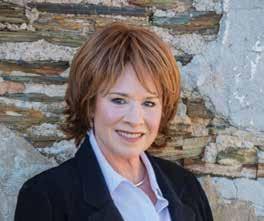

To
Gallaway
Cathey's
35-A District Agriculture Assn. 966-2432

Mariposa Chamber of Commerce 966-2456
Chases Foothill Petroleun 966-3314
Edward Lien & Toso Ag Appraisers 634-9484
Palmer Tractor 374-3470
Ranch Fence, Inc. 966-5914
Valley Pacific Petroleum .................... 948-9412
Yosemite Glass & Window Inc. ......... 966-3292
Mount Bullion Vineyard ..................... 377-8450
Rauch Ranch Vineyard & Winery ...... 742-7162
Inter-County








To be included in the directory, join Merced County Farm Bureau as a business member by calling 723-3001.

AC King 722-3552
Atwater Radiator & Muffler, Inc. 358-2638
Car Plus 722-3552
SS Blue 722-2583
Allison Sierra, Inc. 966-4082
Dias Construction, Inc. 634-9601
Mid Cal Pipeline & Utilities, INC ....... 383-7473
M-Mig Construction, Inc. ................... 724-9488
Garton Tractor, Inc. ............................ 726-4600
Holt Ag Solutions ............................... 723-2021
J M Equipment Co Inc . 386-1797
Kirby Manufacturing 723-0778
Laird Mfg LLC 722-4145
N&S Tractor 383-5888
Flanagan Realty 723-4337 (Merced)
Flanagan Realty (559) 665-1313 (Chowchilla)
Powerhouse Realty Jed Kruppa Team 617-6727
Property Team ................................... 769-4698
Dick Templeton Property Team ........ 761-4441
Valley Real Estate Sales, Inc. 854-1000
Blue Diamond Growers ........... (559) 474-2996
California Farmland Trust ....... (916) 544-2712
California Sweet Potato Council 385-7403
California Women for Agriculture 723-5878
Central CA Irrigation District 826-1421
Cortez Growers Association 632-3118
Dos Palos Co-op Gin.......................... 387-4151
Farmers Rice Cooperative ...... (916) 923-5100
Gustine Drainage District 854-6782
Hilltop Ranch Inc. 874-1875
Livingston Farmers Assoc 394-7941
Merced Boosters 761-0815
Merced Irrigation District 722-5761
Merced College Ag Division .............. 384-6250
Turlock Irrigation District................... 883-8205
UCCE Merced 385-7403
Water & Land Solutions 677-4700
A-Bar Ag Enterprises 826-2636
Agri-Valley Consulting 769-2357
Caddy Shack Rodent Servc.....(559) 363-3315
Cal Ag Safety 351-0321
Cal Corn Growers Inc. (559) 665-5775
Chipponeri Electric ............................ 634-4616
Dutch Door Dairy ............................... 648-2166
Farm Management Inc. 667-1011
Guerrero Farm Labor 492-0408
Horizon Farms, Inc. 383-5225
J & F Fertilizer 854-6325
La Follette Enterprises, Inc. 632-1385
Mass Energy Works. (530) 710-8545
Machado Feed Company .................. 658-5943
Maciel & Co 777-0911
Mid Valley Ag Service 394-7981
Modern Dairy 722-7452
Modesto Dairy Supply ....................... 669-6200
Silva & Sons Custom Spreading 667-2566
Stone Family Spreading 756-1491
The Pollination Connection (877) 970-BEES (2337)
A V Thomas Produce ......................... 394-7514
Dallas Distributing Co 394-2803
Del Rio Nut Company 394-7945
The Morning Star Company .............. 826-8000
Minturn Huller Co-op (559) 665-1185
Parreira Almond Processing Co. 826-1262
Sensient Natural Ingredients (800) 558-9892
Yosemite Farms ................................. 383-3411
Baldes Hay Co ......................... (559) 718-9714
Bertuccio Hay 761-6247
Castillo Brothers Hay 392-3817
Diamond J Farms 564-0870
Minturn Huller Co-op .............. (559) 665-1185 Northern Merced Hulling 667-2308 Wallace & Son 382-0131
Allison Sierra, Inc. 966-4082
Agri-Valley Irrigation ......................... 384-8494
Dickey's Pump Service 394-3112
Irrigation Design & Construction, LLC387-4500
Pacific Southwest Irrigation 460-0450
Precision Aqua ................................... 756-2025
Quality Well Drillers 357-0675
Rain for Rent/Westside Pump (559) 693-4315 Robal Inc. 826-4540
San Luis Pump Company. ................. 383-0464
Shannon Pump Company 723-3904
Environmental Spraying Service 667-1038
Malm Ag Pest Management 392-6905
Star Creek Land ............................... 704-1790
Ag Flag .............................................. 357-3424
Cal Farm Service 358-1554
Kellogs Supply 722-1501
Livingston True Value 394-7949
Hardware & Farm Supplies............... 394-7949
Marfab 826-6700
Modesto Dairy Supply 669-6200
Stanislaus Farm Supply 723-0704
Custom Farm Services 358-1759
Amarants Propane Service 358-2257
Hunt & Sons, Inc. (916) 383-4868
Western States Petroleum Assoc. ........... (661) 321-0884
Valley Pacific Petroleum 948-9412
Van De Pol Petroleum 667-0236
Barlocker Insurance 383-0220
Fluetsch & Busby Insurance 722-1541
Rico, Pfitzer, Pires and Associates .. 854-2000
Walter Mortensen Insurance 353-2700
Western Valley Insurance 826-5667
Winton Ireland Insurance 394-7925
Alice B. Contreras CPA 722-6778
American Ag Credit 384-1050/826-0320
Central Valley Community Bank........725-2820
Grimbleby Coleman CPAs 527-4220
Trans County Title Company 383-4660
Yosemite Farm Credit 383-1116
Berliner Cohen LLP 385-0700
The Hat Source 357-3424
Merced County Fair ........................... 722-1506
P. B. Iyer, M.D. 854-1120
Razzari Auto Center. 383-3673
Unwired Broadband (559) 336-4157
DCB Farming LLC
J&J O'Banion Ranch, LLC
Jorgensen Ranch
Live Oak Farms
Migliazzo Farms
Nicholas Calf Ranch
